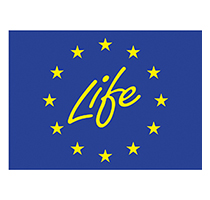Implementing actions
Implementing actions
ACTION A. 1 Workshop to select 16 high priority IAP species for a PRA
The purpose of this action is to select 16 high priority invasive alien plant species for risk assessment. 6 - 8 experts from the Panel on Invasive Alien Plants and the LIFE Project Manager will meet for a three-day workshop at the EPPO headquarters in Paris to select 16 of the highest priority IAPs from the EPPO List of Invasive Alien Plants and the horizon scanning study. The selection of these species will be processed by slightly modifying the current EPPO Prioritization Process. These modifications are needed to prioritise the top 16 species in full compliance with the Regulation. Several modifications will be discussed during the workshop, for example (i) the availability of scientific information on eco-climatic preferences, spread capacity and potential damages to perform PRA, (ii) the number of biogeographic regions the species is likely to colonise in Europe, (iii) additional impacts on human health, agriculture and forestry and (iv) capacity to reduce/mitigate risk through trade restriction and management actions. The modifications will be incorporated into the Prioritization Process in the first day of the workshop. In day 2 and 3, the experts will assess each species using the modified tool to produce a risk-based list of 37 IAP species will be produced. This list will identify the top 16 species for which a PRA will be conducted within the IAP-RISK project.
ACTION A.2 Update Express DSS in CAPRA software to requirements of Regulation no. 1143/2014
This action will update the EPPO Express DSS in the current CAPRA software. This action will be conducted during the first quarter of 2016. Two additional sections will be added to the Express DSS:
Ecosystem service section - where the user is asked if the invasive alien plant has impacts on provisioning, regulating, supporting or cultural services (yes/no answer) and to provide a description of the impact along with supporting references.
Climate change - where the user is asked if introduction pathways, risk of establishment, risk of spread and impacts will change as a result of climate change. The user will provide text justification along with supporting references.
ACTION A. 3 Selecting experts for expert working groups
Through this action international experts will be identified and invited to an expert working group to assess two invasive alien plants.The EPPO Secretariat will identify leading experts on individual species and compile a group of 7 experts that can risk assess two species in one EWG at the EPPO headquarters in Paris (Action A6).
Experts will be called upon as individuals because of their specific expertise and are not expected to represent interests of their country/organizations.
It is expected that most experts will be from government departments or universities, concerned with the regulation, control, management of and research on a particular species.
Once selected, the experts will be provided with supporting documentation on how EPPO conducts its risk assessment process, background information on the EU Regulation (1143/2014) and administrative assistance to support attendance to the expert working group.
ACTION A. 4 Species distribution modelling and risk maps for priority invasive alien plan species
This action will model and map the potential distributions of the 16 priority IAPs identified from Action A1 with the resulting maps included in the PRA documents (Action A5) and reviewed during the EWG (Action A6). The models will predict suitability for invasion across the EU for the current climate and under future climate scenarios. We will produce a transparent, reproducible and rapid methodology for developing species distribution models for invasive alien species risk assessments. This will involve a standardised and semi-automated workflow using the open source R software. A report detailing the modelling workflow and results for each IAP species will be produced. An annotated R script will also be delivered to provide a user-friendly and generic tool for future risk assessment. This will allow users to reproduce and apply the workflow for other species in a small number of commands with clear visual output.
ACTION A. 5 Drafting of 16 PRAs
This action will result in the drafting of 16 documents by leading experts and the IAP-RISK Project Manager, where each document will form the basis for discussion during the expert working group (Action A6). The EPPO Secretariat will review all draft documents before sending to the expert working group.
ACTION A. 6 Assessment of PRAs by expert working group
This action involves convening an expert working group to risk assess two species. In total 8 EWGs will be conducted within this project where each will risk assess two IAP species over five days. Combining closely related species or species with similar ecological habits/niches or life forms (for example aquatic plants, vines or species from the same family/genus) into one EWG allows for a comparison of scoring, stimulates increased debate and reduces costs. It is the role of the EWG to evaluate and amend (as required) the scientific information within the first initial draft PRA document; to provide robust scientific judgement on all aspects of the PRA in particular where scientific information is lacking; to review the literature sources; to assess the risk and the uncertainties and to provide a Pest Risk Management Plan for the species and pathways under consideration.
ACTION A. 7 Full peer review of 16 PRAs by three independent Panels
Each PRA will undergo peer review by three independent expert groups where the scientific contents, level of risk, uncertainty and risk management of the species will be expertly reviewed. Following the finalization of the PRA by the expert working group, each document will be sent for review to: (1) EPPO Core Members for PRA (when the PRA is finalised by the EWG), (2) the Panel on Invasive Alien Plants and (3) the Working Party for Phytosanitary Regulations (which meets annually in June).

